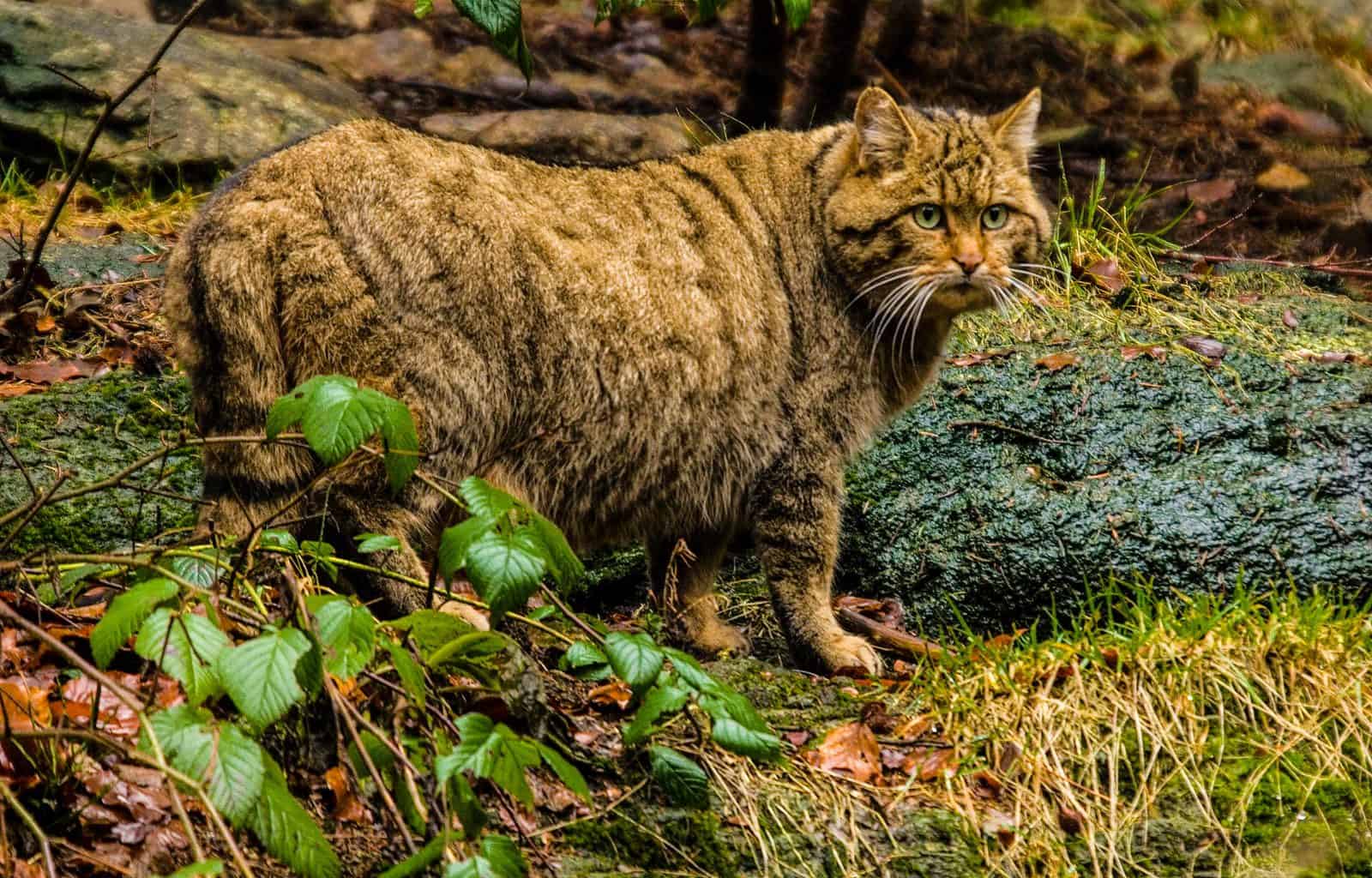Woods for Wildcats
The European wildcat is a small wildcat species native to continental Europe, Scotland, Turkey and the Caucasus. It lives in mixed and deciduous forests, where it is ideally not disturbed by humans and their activities.
The European wildcat looks almost like a domestic cat. It is only slightly larger with a broad head and wide ears. Its tail is bushier than that of a domestic cat and its fur is generally brown with black stripes on the tail and along the spine.
Even though there are a lot of efforts to protect the European wildcat, in Germany it is listed as endangered and it is also only rarely seen in other countries. To changes in its habitat, for example logging or infrastructure projects, it reacts very sensitively. Therefore, a new programme was established in Germany by the Federation for the Environment and Nature Conservation to protect the European wildcat. It is financed by the federal environment ministry and its actions will be implemented in ten different federal states at the same time to increase its impact.
Protecting wildcats’ habitat
By protecting wild forests, the European wildcat is not the only species that profits. Healthy forests are important for other animals as well and to conserve them is essential for our climate, biodiversity and ecosystems. Forests not only help in absorbing carbon dioxide, but they also provide a habitat for many different species.
Wildcats usually live very secluded. Where they can be found, other endangered animals like the lynx, or rare birds like the black stork are normally also present as this ecosystem presents an ideal habitat for them, too. To help conserve the European wildcat, forests are being prepared in favour of it, among other by changing the structure of forests used for economy and leaving more dead wood in the forest or improving the forest edges.
Over the last few decades, more and more evidence was found that the wildcat population increased or reappeared again where it had previously been extinguished.
They used to be really widespread across the whole of the UK and are now our rarest mammal on the verge of extinction.
However, in many places that would in theory present an ideal habitat for it, the wildcat is still not present. This is especially true for Germany, where its main distribution is located. That is why the German ministries want to take responsibility and conserve the species there, where it is of crucial importance for its survival worldwide.
Threats
Among the threats of the European wildcat is the hybridisation with domestic cats. When this hybridisation happens, it can lead to the loss of genetic variation. Since wildcats and hybrids with domestic cats look very similar, it is quite difficult to keep track of wildcats populations.
Another threat is disease transmission from domestic cats and competition with feral cats for food. Moreover, many wildcats get killed on roads or by accidents with measures for other carnivores.
Not that many studies and research exist yet about the European wildcat. This is also true for monitoring data. Therefore, it is rather difficult to estimate the populations and distribution of wildcats and more research needs to be put into it in the future in order to help conserve the species.








